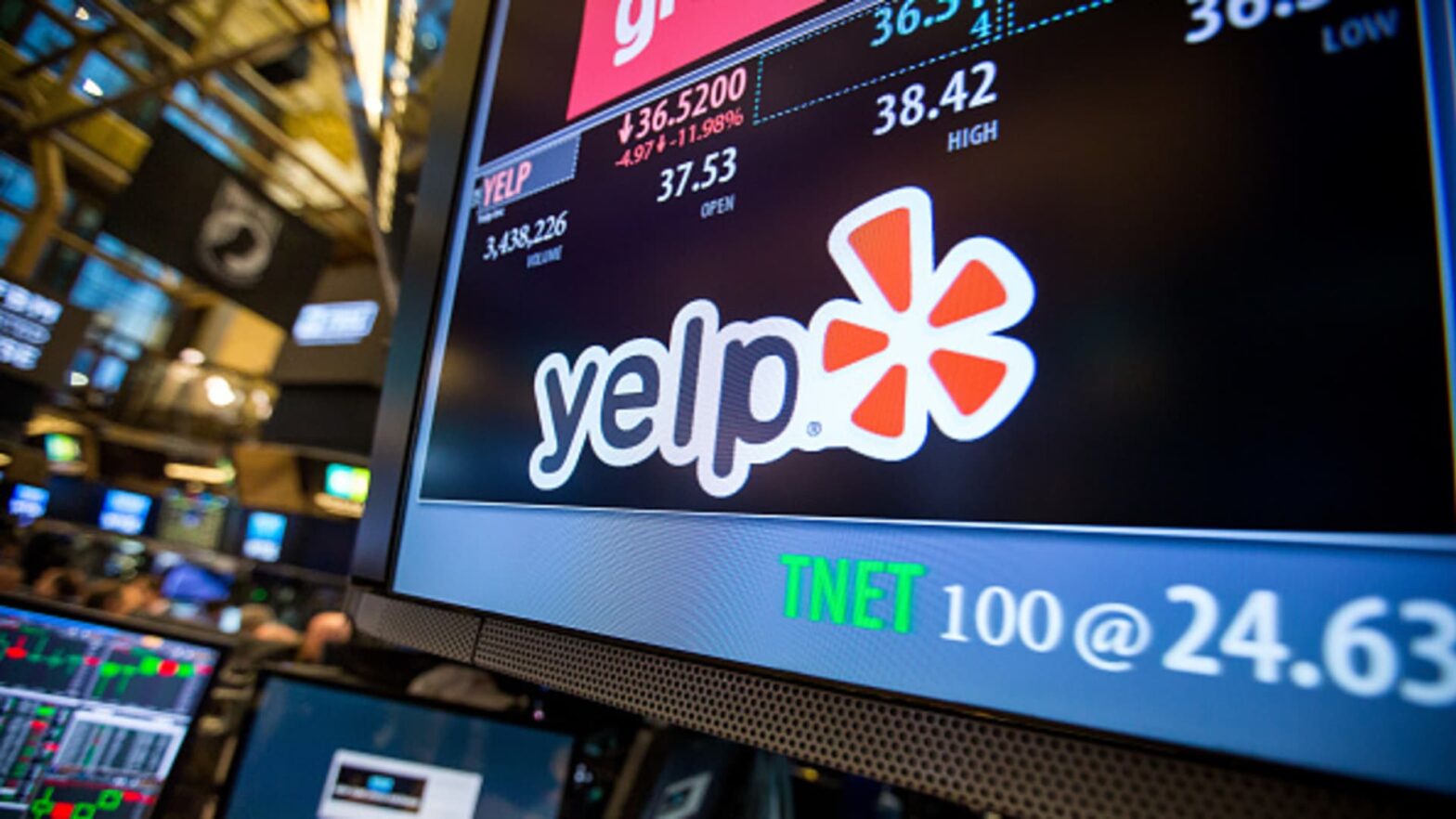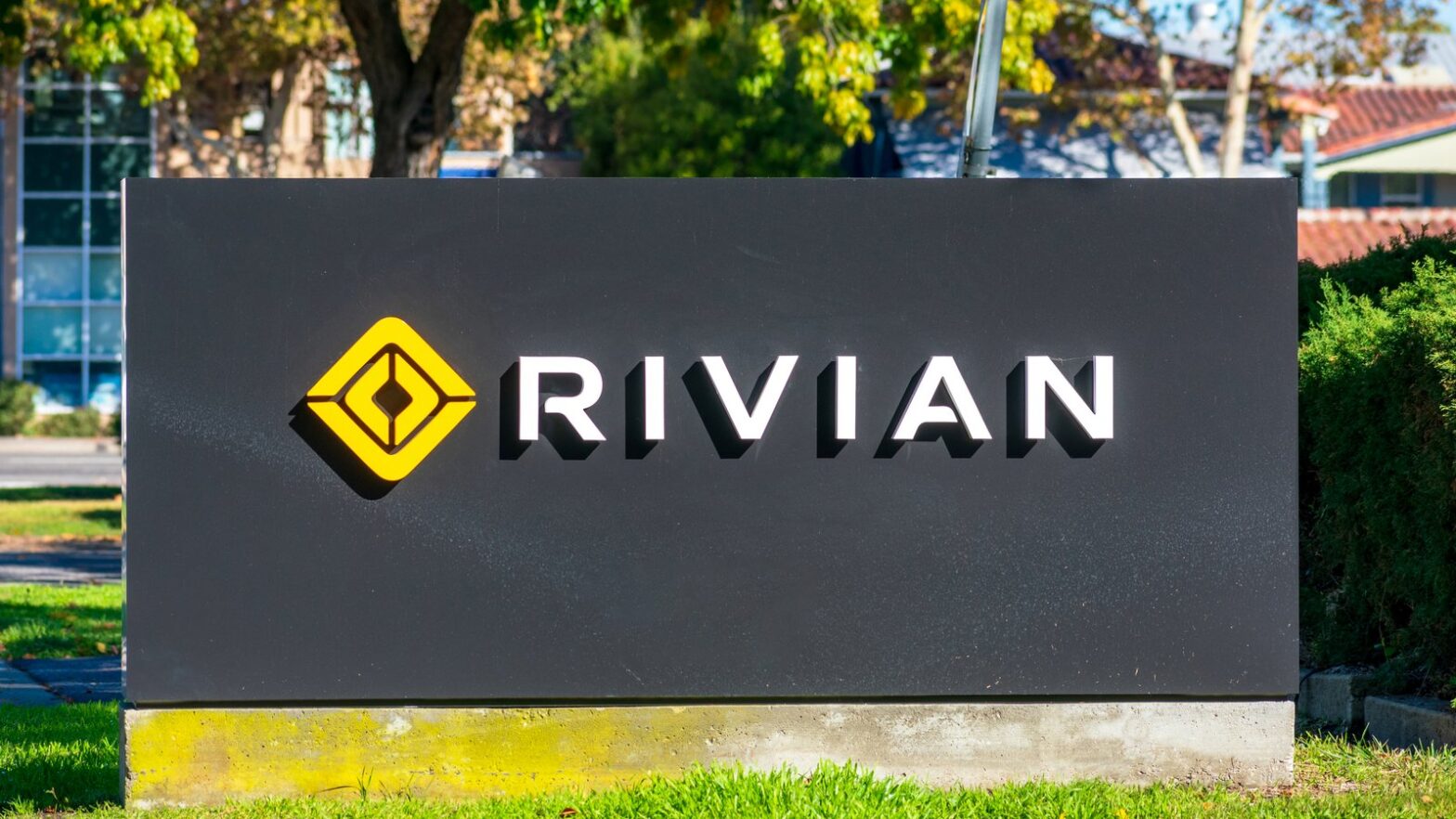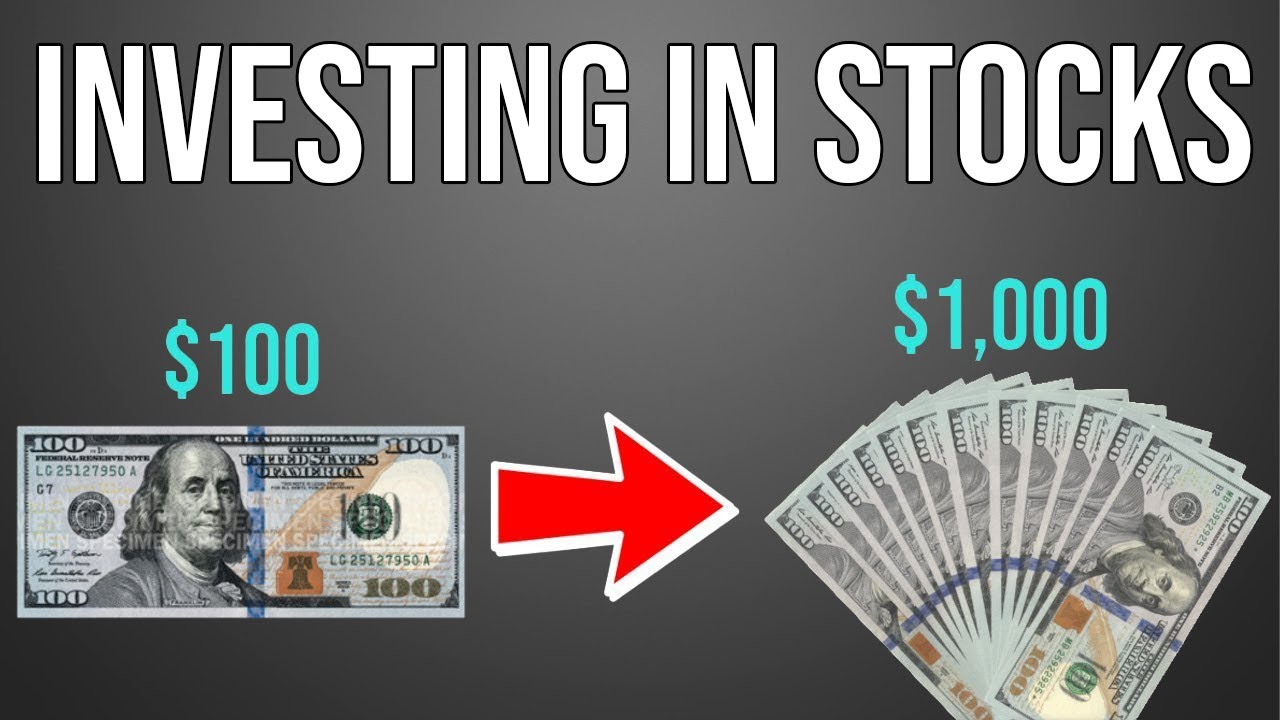Stocks moving big after hours: PANW, URBN, INTU, TOL
Construction workers build a Toll Brothers home in Boca Raton, Florida.
Joe Raedle | Getty Images
Check out the companies making headlines in extended trading.
Palo Alto Networks — Shares gained 3.5% after the company’s fiscal third-quarter earnings and revenue topped estimates. The cybersecurity company posted adjusted earnings of $1.10 per share and revenue of $1.72 billion. Analysts polled by Refinitiv had estimated earnings of 93 cents per share and $1.71 billion in revenue. The company’s earnings guidance for the fiscal fourth quarter also surpassed expectations.
Urban Outfitters — The clothing retailer’s stock popped 6%. Urban Outfitters posted earnings of 56 cents per share in the first quarter. Analysts had expected earnings of 35 cents per share, according to Refinitiv. Revenue also beat expectations, with the company reporting $1.11 billion versus consensus estimates of $1.09 billion.
Agilent Technologies — Shares of the laboratory technology company declined more than 6%. Agilent posted an earnings and revenue beat in the fiscal second quarter, according to Refinitiv. Guidance for earnings and revenue in the fiscal third quarter was lower than anticipated.
Intuit — The tax software company’s shares fell more than 5%. While Intuit’s fiscal third-quarter earnings beat estimates, revenue fell below expectations, according to Refinitiv. The company’s earnings outlook for the current quarter was also lower than what analysts had estimated.
Toll Brothers — Shares gained more than 3% after the company’s fiscal second-quarter earnings and revenue beat analysts’ estimates. The company said the increase in demand that started in January has continued into the start of its third quarter.
VF Corp. — The apparel company’s shares jumped 2% in extended trading. VF, whose brands include Smartwool and The North Face, posted adjusted earnings of 17 cents per share on revenue of $2.74 billion during its fiscal fourth quarter. Analysts were calling for earnings of 14 cents per share on revenue of $2.73 billion, according to Refinitiv.
7 Stocks That Could Be the Next $2 Trillion-Dollar Companies
As someone who has been writing about stocks professionally for 18 years, I remember when Microsoft (NASDAQ:MSFT), Amazon (NASDAQ:AMZN) and Apple (NASDAQ:AAPL) were the first companies with $1 trillion market capitalizations. There was a great deal of fascination with the milestones at the time. Subsequently, both overcame the $2 trillion mark, and Alphabet (NASDAQ:GOOG, NASDAQ:GOOGL) has also joined the $1 trillion club. I guess it’s natural that the first companies to cross that huge $1 trillion threshold would get by far the most attention. Still, I find it interesting to contemplate the question of which names will be the next stocks to become future $2 trillion companies.
Certainly, the advent of a few new technologies will make it much easier for more firms to become future $2 trillion companies in the future. Of course, there’s the transition to the cloud, which was the key factor that enabled MSFT’s market capitalization to eclipse $1 trillion, then $2 trillion. Now AI has become the next, big technology that will propel multiple firms to become the future $2 trillion companies. Some of those companies could include:
ServiceNow (NOW)
ServiceNow (NYSE:NOW) will join the $2 trillion companies’ list thanks to its time-and-money-saving technology which incorporates “workflow automation” and “artificial intelligence.” As I explained in a past column, NOW allows firms “to automate many routine IT tasks.” In my opinion, NOW will continue to deliver great financial results and grow rapidly because there are few things that firms like better than large, nearly immediate cost savings.
Further, as AI advances, NOW’s solutions are also likely to become even more helpful and financially rewarding to its customers. Indeed, it’s encouraging that NOW isn’t resting on its laurels and is increasing its exposure to AI, as it recently bought G2K. The latter firm’s technology uses AI to enhance companies’ ability to analyze data.
Also positive is NOW’s decision to, for the first time buy back NOW stock. Specifically, the company disclosed on May 17 that it plans to purchase $1.5 billion of NOW stock. The move will hasten the company’s path to the $2 trillion level and shows that it has more confidence than ever in its ability to become one of the world’s most valuable companies.
Amazon (AMZN)
Amazon (NASDAQ:AMZN) is not that far away from becoming one of the first companies to reach the $2 trillion market. Right now, its market capitalization stands at $1.185 trillion.
Of course, Amazon’s cloud business is continuing to grow rapidly, and that will help it reach the $2 trillion club. Also growing rapidly is Amazon’s ad business. Moreover, I remain convinced that, at some point this year, consumers will reduce their spending on experiences and increase the percentage of the funds that they spend on products. That will be positive for Amazon’s massive e-commerce business and for AMZN stock. Also noteworthy is that all of the company’s businesses that I’ve mentioned so far can be meaningfully boosted by AI.
Another key to AMZN becoming one of the $2 trillion companies of the future is its ability to disrupt America’s highly inefficient pharmaceutical sector. As I’ve mentioned in the past, by cutting out multiple “middlemen,” Amazon will be able to, through its new Amazon Clinic service, provide drugs much more cheaply to Americans versus what they’re currently paying. I believe that will become a huge business for AMZN within a year or two.
Finally, autonomous driving and other technological innovations will allow Amazon’s e-commerce business to accelerate its market-share gains.
Alphabet (GOOG,GOOGL)
Alphabet (NASDAQ:GOOG) (NASDAQ:GOOGL) is also nearing the $2 trillion mark. In fact, its current market cap stands at $1.56 trillion. I think it’s worth noting that I expect GOOG to reach $2 trillion in the next year or two. Of course, AI will boost the effectiveness of the company’s search engine business. Consequently, the search engine’s revenue growth will accelerate as it takes tremendous market share from non-digital ad platforms.
Alphabet can also use AI to enhance the “stickiness” of YouTube, and the service will be able to make its ads much more interactive. Additionally, Alphabet should be able to offer AI services via Google Cloud. Finally, I expect Waymo, Alphabet’s autonomous-driving unit, to, within the next few years, start generating significant amounts of revenue for Alphabet.
BYD (BYDDF)
Chinese automaker BYD (OTC:BYDDF) has become the world’s leading seller of electric vehicles if one counts plug-in hybrids as EVs. Moreover, the automaker generates a significant amount of revenue from selling electric buses and batteries for EVs, large-scale electricity storage, and consumer-electronic products. I expect the demand for all of these ancillary products to grow significantly over the longer term.
Also in the longer term, I predict that BYD’s revenue from subscriptions that it sells to the owners of its EVs will soar. That’s because, as time goes on, the ability of automakers to offer subscriptions for services like monitoring data and enhancing vehicles’ security is likely to increase meaningfully.
Further, BYD will probably greatly increase its deliveries in other countries in the coming years. That’s because it appears to, more than any other EV maker, have developed the ability to manufacture affordable yet popular and profitable EVs. For example, its Seagull EV costs $11,300 in Europe and should be very appealing to many European consumers.
Nvidia (NVDA)
Powered by Nvidia’s (NASDAQ:NVDA) sales of chips for use in developing AI, Nvidia stock is closing in on the $1 trillion market, as its market capitalization as of the market close on May 22 was $771 billion. Within the next few years, I believe that Nvidia’s opportunity in AI will probably enable it to be one of the next stocks to reach the $2 trillion level.
Adding to my conviction about the strong, longer-term outlook of NVDA stock, Bank of America is estimating that the total available market for AI accelerators may reach $50 billion to $60 billion in 2027. And the bank believes that NVDA is well-positioned to succeed in that market since Nvidia already has all of the elements that it needs in the sector, while “many competitors” will need a decade or more to catch up with it.
Meanwhile, two investment banks — Oppenheimer and Susquehanna — also recently expressed optimism about Nvidia’s opportunity in the AI space. The banks believe that the proliferation of AI is enabling Nvidia to sell many more of its graphics processing units, which are used to create AI.
Finally, last month CNBC reported that “Nvidia’s most-advanced graphics cards are selling for more than $40,000 on eBay,” amid strong demand from AI developers.
Merck (MRK)
Merck’s (NYSE:MRK) Keytruda is one of, if not the most, successful cancer drugs of all time. The treatment generated $20.9 billion in sales for Merck last year. And the pharmaceutical giant is constantly taking steps that enable the drug to be used to combat new types of cancers. For example, just earlier this month, it presented data showing that the drug, in combination with chemotherapy, raised overall survival rates in first-line lung cancer, The data will likely lead to a new approval for Keytruda in Europe.
Keytruda’s patent will expire in 2028, but Merck appears to be taking steps, including working on ” two subcutaneous versions of Keytruda.” that will likely wind up extending the drug’s patent protection,
And crucially, Merck has shown the willingness and ability to make positive, game-changing acquisitions. One recent deal in that category was its agreement, made last month, to take over Prometheus Bio (NASDAQ:RXDX). The latter firm has developed ” a treatment for inflammatory bowel disease” that looks poised to become very successful. In a trial late last year, 26.5% of ulcerative colitis patients who took Prometheus’ drug entered remission, versus just 1.5% of those who received placebos.
Many Wall Street analysts are upbeat on the drug, and it does seem poised to make a great deal of money for Merck. With Keytruda likely to generate huge revenue and profits for Merck well into the future and the company making superb acquisitions, MRK stock looks poised to reach the $2 trillion mark in 2028 or shortly thereafter.
Eli Lilly (LLY)
Eli Lilly (NYSE:LLY) has two blockbuster drugs on the way that will very likely enable LLY to become one of the next $2 trillion companies. LLY’s Alzheimer’s treatment, donanemab, “was effective in reducing cognitive and functional decline in patients with early symptomatic Alzheimer’s disease,” the company reported last month.
Meanwhile, the company’s weight-loss drug, Mounjaro, has demonstrated the ability to enable Type 2 diabetes patients to exercise “chronic weight management.” And the FDA may approve the drug as a treatment for all obese and overweight patients “as soon as” this year. Taken together, I believe that these drugs will enable LLY stock to eclipse the $2 trillion mark in 2028 or not very long thereafter.
As of the date of publication, Larry Ramer’s wife owned shares of NOW. The opinions expressed in this article are those of the writer, subject to the InvestorPlace.com Publishing Guidelines.
3 AI Stocks That Google Will Stomp Out
Artificial intelligence has become one of the hottest stories of the decade, creating big opportunities for AI stocks. In fact, ever since the release of the AI chatbot ChatGPT, interest in the AI story has only gotten hotter, with top tech companies racing for a bigger piece of the AI pie. What makes the story even more attractive is Statista’s estimates the AI market could grow nearly 20-fold to $2 trillion by 2030. In short, it’s a transformational opportunity that could add billions to the bottom line. Better, its impact can already be seen just about everywhere: supply chains, law enforcement, medical care, finance, information technology, data security, education, transportation, governments, etc. But that’s just the start.
According to Alphabet’s (NASDAQ:GOOG, NASDAQ:GOOGL) CEO Sundar Pichai, “society will need to prepare for rapid advancements in artificial intelligence” that will “affect every product across every company” in the near future, as reported by the New York Times. Some of the top AI stocks to avoid that are already being adversely impacted include:
AI Stocks to Avoid: Chegg (CHGG)
Look at Chegg (NYSE:CHGG), for example. Just days ago, the student-first interconnected learning platform was cut in half. All after CEO Dan Rosensweig said ChatGPT is “having an impact on our new customer growth rate.”
“In the first part of the year, we saw no noticeable impact from ChatGPT on our new account growth and we were meeting expectations on new sign-ups,” Rosensweig added, as quoted by CNBC. “However, since March we saw a significant spike in student interest in ChatGPT. We now believe it’s having an impact on our new customer growth rate.”
Unfortunately, the situation could get far worse for Chegg. For one, it just acknowledged its customers are trying ChatGPT, which could weigh heavily on future revenue. Two, it just said revenue would come in between $175 million and $178 million, which is far below expectations for $193.6 million. Three, with declining financials, there are concerns about its long-term ability to survive at all against ChatGPT and other AI industry 800 lb. gorillas, like Google.
Uber Technologies (UBER)
Or look at Uber (NYSE:UBER), which uses AI to power many of its technologies and services. It’s another one of the AI stocks to avoid, being impacted by interest from Google.
Earlier this year, the company inked a seven-year cloud deal with Google to move to the cloud. All as it looks to cut costs, refocus engineering efforts, and reimagine the Uber customer experience. Along the way, the two will also transform mobility, delivery, and advertising. They may expand the collaboration even more to deploy cloud infrastructure, Artificial Intelligence, data analytics, and edge networking solutions.
Taking AI a step further, Uber just filed for a patent application on a system that would leverage AI and machine learning to match potential riders and drivers based on predictions of customer actions. In fact, according to the patent application, Uber wants to patent the ability to predict when users need a ride based on profile data. Then, Uber could match a driver and notify the customer where they need to be, as noted by Business Insider.
Whatever you may think of the idea, it could make Uber a lot of money.
BigBear.AI (BBAI)
With the artificial intelligence excitement in 2023, however, BigBear.AI (NYSE:BBAI) exploded in popularity this year. However, with Google’s dominance, BBAI could eventually get stomped out, making it one of the top AI stocks to avoid. Part of the problem here is profitability. While the company does have a steady stream of revenue, it’s still losing a good deal of money.
Also, as InvestorPlace contributor Ian Bezek recently noted, “Predictive analytics just isn’t a fast-moving category that can support the sort of high valuations traders are assigning to AI stocks today. Throw in a shaky balance sheet and BigBear.ai is not a worthy AI industry selection.”
On the date of publication, Ian Cooper did not have (either directly or indirectly) any positions in the securities mentioned. The opinions expressed in this article are those of the writer, subject to the InvestorPlace.com Publishing Guidelines.
7 Dividend Stocks Yielding 10% (or More!)
Many investors rely on the stock market to provide strong income streams. Particularly for conservative investors and retirees, dividend stocks are an integral part of meeting financial goals. However, particularly in the realm of ultra-high dividend stocks, risk abounds. In many cases, high yields occur because the underlying company has some structural flaws or weaknesses that put the dividend at risk. As such, investors should be prudent when buying high-yield income names.
There is good news, though. After sifting through the realm of high-yielders, there are some trustworthy options for investors. These dividend stocks with 10% yields are the top high-yield dividend stock picks for 2023.
Banco de Chile (BCH)

Source: jittawit21/Shutterstock.com
Banco de Chile (NYSE:BCH) is a leading Chilean financial institution. Shares have been listed in New York for more than twenty years and have historically delivered strong results. However, BCH stock has not been a winner in recent years. This is largely due to the macroeconomic backdrop. Chile is reliant on the export of commodity goods for much of its economic activity. Leading exports include copper, gold, fresh fruit, and fish.
As you can imagine, the economic outlook for Chile, and thus its bank, has brightened considerably over the past 18 months. Prices of numerous commodity goods have soared amid the current inflationary environment. In addition, there is now a rush to find new sources of copper and lithium to meet the insatiable need for batteries. The electrification of the transportation industry relies on access to metals that Chile has in huge quantities. As for Banco de Chile itself, the bank is exceptionally profitable. It sells at just 6 times trailing earnings while offering a 16.6% dividend yield.
OneMain Holdings (OMF)

Source: Dmitry Lobanov/Shutterstock.com
OneMain Holdings (NYSE:OMF) is a specialty personal lender. It operates in 49 U.S. states, making personal loans to people that often struggle to obtain credit from traditional banks. OneMain was created out of Citigroup (NYSE:C) many years ago. It benefitted from Citi’s ample access to historical data and lending information. More recently, OneMain invested heavily in digital product and distribution solutions. This proved invaluable during the pandemic when customers no longer wanted to walk into physical branch locations.
OMF stock is now selling for just 6x earnings. Investors are understandably worried about how a so-called subprime lender may perform during a recession. That said, OneMain’s credit has held up well so far, with just 2.7% of its loans being 90-day delinquent as of last quarter. That’s a great performance given how high the interest rates are on OneMain loans. OMF stock currently yields 10.62%.
Starwood Property Trust (STWD)

Source: iQoncept/shutterstock.com
Starwood Property Trust (NYSE:STWD) is a broadly diversified mortgage REIT. It lends against single-family housing, apartments, hotels, and offices among many other categories. The company has a current portfolio of more than $28 billion.
The firm is known for using floating-rate loans. This has proved invaluable in the current interest rate environment as Starwood can earn more from its portfolio as rates rise. The company also holds special servicer status which gives it protection if the underlying credit quality behind one of its loans declines.
STWD stock has fallen 25% over the past year. In doing so, it has fallen to less than 9 times forward earnings. Shares offer an 11.3% dividend yield today.
Ecopetrol (EC)

Source: Shutterstock
Ecopetrol (NYSE:EC) is the state-run oil company of the nation of Colombia. The Colombian government owns 88% of Ecopetrol shares, with the other 12% being publicly traded in both Colombia and on the New York Stock Exchange. This state ownership gives Ecopetrol a favored status within Colombia. The company remits most of its earnings to shareholders via dividends, with 88% of said dividends going to the government.
This has become particularly relevant now, as Colombia elected a strongly left-wing government in 2022. The government has frequently railed against the exploitation of fossil fuels and has sought to stop the licensing of new oil production in Colombia. However, at least to date, Ecopetrol has been able to keep operating without too much hassle — as would be expected for the state company — even as private producers have struggled.
Given the political uncertainties, Colombian shares, including Ecopetrol, have slumped over the past year. As a result, EC stock is now selling at just 4x earnings and offers an eye-popping 17.52% dividend yield. There is a high level of uncertainty here, but investors are certainly getting richly compensated for taking said risk.
Sociedad Quimica y Minera de Chile (SQM)

Source: Shutterstock
Sociedad Quimica y Minera de Chile (NYSE:SQM) is Chile’s leading chemicals company. It benefits from some of the same macroeconomic factors described in the above Banco de Chile pick. And, more specifically, SQM is the largest producer of lithium in Chile. It has enjoyed windfall profits over the past few years as lithium demand has soared.
Indeed, SQM’s revenues soared from $1.9 billion in 2019 to $10.7 billion in 2022. SQM stock has sold off this year amid fears of a slowdown in demand out of China. That’s fine in the short term, but there’s little doubt that lithium demand is only going up in the bigger picture. SQM stock currently yields 14.8%.
Bancolombia (CIB)

Source: Shutterstock
As the name would suggest, Bancolombia (NYSE:CIB) is one of Colombia’s three large banking franchises. The firm, hailing from Medellin, was founded way back in 1875 and has traded on the New York Stock Exchange since the 1990s.
Like Ecopetrol, Bancolombia is currently going through a challenging stretch thanks to the elevated political uncertainty. That said, Bancolombia earned record profits in 2022 and analysts expect another increase in profits in 2023. Colombia’s GDP continues to grow in 2023 thanks in part to strong commodity prices and rising levels of tourism.
CIB stock is currently selling for 4x forward earnings and offers a 10.22% dividend yield. Typically, Bancolombia shares have sold for closer to 8-10x earnings and should regain that valuation sooner or later once the political concerns start to fade. In the meantime, shareholders can reap an outsized dividend yield.
Blackstone Mortgage Trust (BXMT)

Source: Shutterstock
Blackstone Mortgage Trust (NYSE:BXMT) makes commercial mortgages. Given a great deal of consternation about the commercial real estate market, shares of BXMT stock have plunged in recent months.
But, perhaps things aren’t as bad as the market would suggest. For one thing, only 25% of Blackstone Mortgage Trust’s exposure is to U.S. office space. Blackstone Mortgage is diversified with exposure to apartments, life sciences buildings, and international properties among other things in addition to its office loans.
97% of the company’s loans are currently performing as planned. And earnings remain high enough to cover the dividend; the trust saw earnings of 68 cents per share and distributable earnings of 79 cents last quarter versus its dividend of 62 cents per share. There is the risk here around a further decline in the office market or a recession more broadly. But the 13.5% dividend yield rewards investors greatly for that.
On the date of publication, Ian Bezek held a long position in CIB, EC, SQM, and BCH stock. The opinions expressed in this article are those of the writer, subject to the InvestorPlace.com Publishing Guidelines.
Yelp, AutoZone, Lowe’s and more
Check out the companies making headlines in midday trading.
Yelp — Shares of the online reviewing company jumped 5.7% after activist investor TCS Capital Management took a stake in the firm, saying in an open letter the company should explore strategic alternatives, including a sale. TCS built up a more than 4% position in Yelp, becoming one of the company’s top five shareholders. TCS said Yelp is “shockingly undervalued” and could be sold to a private equity buyer for at least $70 per share, a more than 120% premium.
AutoZone — The auto retailer’s shares fell 6% after missing revenue expectations for the fiscal third quarter. AutoZone posted $4.09 billion in revenue, less than the $4.12 billion consensus estimate of analysts polled by Refinitiv. Earnings of $34.12 per share topped analysts’ $31.51 forecast. Inventory increased 7.4% year over year.
Lowe’s Companies — The home improvement retailer advanced 1.7% on a first-quarter earnings report that beat analyst expectations, but the company cut its full-year outlook.
Chevron — The San Ramon, California-based energy producer added 2.9% in midday trading. HSBC upgraded Chevron to buy from hold earlier Tuesday, citing a potential rebound in oil prices.
Zoom Video Communications — Shares tumbled 8.1% following the video conferencing stock’s first-quarter report. While the company beat Wall Street expectations for both earnings per share and revenue, Zoom’s expectations for the current quarter were only in line with expectations, according to Refinitiv.
Broadcom — Broadcom shares added 1.2% after Apple announced a multibillion-dollar chip deal with Broadcom. The multiyear plan stems from the iPhone maker’s commitment to funnel $430 billion into the U.S. economy.
BJ’s Wholesale — Shares dropped 7.3% after the wholesale club’s quarterly revenue was modestly worse than estimates from analysts polled by Refinitiv. Comparable club sales excluding gasoline also came in slightly weaker than expected.
Peloton — Shares lost 1.1% after the connected fitness equipment company, largely known for its at-home exercise bike, unveiled a fresh marketing strategy to grab new customers. The brand relaunch, which comes as Peloton tries to turn itself around, includes a new pricing structure for its digital app.
Advanced Micro Devices — The semiconductor company’s shares rose 0.1%, hitting a new 52-week high. Bank of America reiterated the chipmaker as a buy in a Tuesday note, saying AMD is on the “verge of another large opportunity” stemming from artificial intelligence demand.
Chimerix — The biotech stock rose 2.1% after Baird began research coverage with an outperform rating. The firm said it’s bullish on a “first-in-class agent” treatment for tumors.
Lifecore Biomedical — The stock jumped 50.2% after Lifecore announced $150 million in new financing, the repayment of outstanding term loans and a new supply agreement.
Integra Lifesciences — Shares fell 20.2% after the medical technology company gave weak guidance for its second quarter. The company said earnings per share should reach 55 cents to 59 cents, less than the prior range of 75 cents to 79 cents and the consensus estimate of 77 cents from analysts polled by FactSet. Integra said revenue should total between $372 million and $376 million, lower than prior guidance of $396 million to $400 million and the FactSet consensus of $398.1 million.
Quanterix, Myriad Genetics — The health technology stocks surged 9.2% and 13%, respectively, following upgrades to buy from neutral at Goldman Sachs. The bank said Quanterix has better operating leverage than the market expects, and Myriad has a differentiated financial profile that’s currently discounted.
Snowflake — Shares rose 1.9% ahead of the cloud computing stock’s quarterly report due Wednesday. Wells Fargo said it was bullish heading into the company’s earnings and reiterated an overweight rating.
CCC Intelligent Solutions — Shares of CCC Intelligent Solutions gained 0.8% following an upgrade to outperform from in line at Evercore ISI. The firm said the software services provider for the property and casualty insurance sector “has been on an ‘AI journey’ long before it became the trend du jour.”
Spotify — The music streaming service lost 0.6% despite Guggenheim reiterating the stock as a buy, noting usage trends remain strong and can help Spotify power a healthy growth cycle.
Regional banks — Several regional banks rose Tuesday. Closely followed PacWest jumped 7.9%, while Comerica and Zions added 2% and 4.6%, respectively.
— CNBC’s Hakyung Kim, Michelle Fox, Samantha Subin, Brian Evans, Yun Li, Sarah Min and Michael Bloom contributed reporting.
3 Undervalued Penny Stocks to Buy for Multi-Bagger Returns

Source: Vitalii Vodolazskyi / Shutterstock.com
The stock market can provide investors with an unpredictable and thrilling journey, filled with both excitement and anticipation. This article will delve into the peak of that exhilaration – penny stocks, and particularly high return penny stocks which may be undervalued relative to their future potential.
These lesser-known stocks have the potential for significant returns. Bold investors might find them particularly interesting. Penny stocks do carry some risk due to their smaller market cap and liquidity. But also consider they offer opportunities not easily found elsewhere.
Stocks that are less examined than others may slip through the cracks. Other investors may watch the big names on Wall Street, while we look for the hidden gems. These kinds of opportunities are possible to uncover with diligent research and asking questions others aren’t.
So here are the three best penny stocks for the potential for multi-bagger returns.
Microbot Medical (MBOT)
Microbot Medical Inc. (NASDAQ:MBOT) researches, develops and introduces micro-robotic technologies to the medical device industry. These technologies are designed to perform different medical procedures with minimal invasiveness, thereby revolutionizing the way treatments are approached.
This stock may be undervalued due to its strong financial position. The company has a solid balance sheet, as its current ratio stands at a healthy 4.30. Additionally, its earnings per share (EPS) has grown 28.40% quarter-to-quarter and grown 12.20% over the past five years, suggesting significant growth.
Another factor is that Microbot Medical’s long-term price action suggests it’s finding a home near the bottom, with a long-term trend in force since September. Additionally, it recently announced a 100% success rate in its preclinical animal study. This could be the first step towards unlocking additional revenue and earnings streams for the company in the future. MBOT could be one of the best high return penny stocks to invest in now.
Eos Energy Enterprises (EOSE)
Eos Energy Enterprises Inc. (NASDAQ:EOSE) operates in the energy storage solutions industry, with a particular emphasis on grid-scale batteries. It aims to develop and bring to market its unique zinc-based battery technology, dubbed the Eos Aurora System.
Eos Energy’s recent strong revenue growth, boasting a 166.70% quarter-over-quarter sales increase, caught my attention. The company predicts substantial EPS growth of 58.40% in the coming year. Eos Energy’s operational efficiency, evidenced by a 225% return on equity (ROE), demonstrates its effective conversion of shareholder resources into profit.
I see Eos Energy as undervalued. Why? The company showed a considerable rebound in its fundamentals during the last quarter with a year-over-year revenue jump of 166%. The company managed supply chain issues effectively, even during what its management described as the toughest period in thirty years. Given these points, I foresee major operational improvements ahead, which should result in higher investor earnings.
EVgo (EVGO)
EVgo Inc. (NASDAQ:EVGO) is a prominent player in the U.S. electric vehicle (EV) charging space. With its well-placed charging stations across highways, cities and other popular locations, EVgo’s Level 2 AC chargers and DC fast chargers offer a convenient and swift charging option for EV drivers.
EVgo’s stock price took a significant hit over the past year, dropping more than 56%. It also lags about 42.42% behind the 200-day simple moving average. If you maintain faith in EVgo’s long-term prospects, you might find now an opportune time to snap up shares at their undervalued price.
EVgo is generating funding for its operations by selling shares and expects to increase its sales by 150% this year. The company will use the majority of the raised capital to broaden its nationwide charging network. Analysts point out that EVgo already operates the “second-largest DC fast charging network,” second only to Tesla (NASDAQ:TSLA).
Considering these factors, keep an eye on EVgo as one of the high return penny stocks you may want to purchase. With the U.S. shifting towards electric vehicles, the company has the potential for explosive growth, signifying a potentially undervalued investment.
On the date of publication, Matthew Farley did not have (either directly or indirectly) any positions in the securities mentioned in this article. The opinions expressed are those of the writer, subject to the InvestorPlace.com Publishing Guidelines.
Major Investor Dumps RIVN: Time to Rethink Your Rivian Bet?
In a shocking development, a Form 13-F filing revealed that a major investor slashed his share position in electric vehicle (EV) manufacturer Rivian Automotive (NASDAQ:RIVN). Does this mean it’s time for you to sell RIVN stock? You have to make your own final decision, but recent data points to potential problems for Rivian Automotive and its stakeholders.
Generally speaking, there’s nothing wrong with investing in EV makers. MotorTrend revealed that 78% of active automotive shoppers are “very interested” in EVs. Plus, almost 50% of potential car buyers said they’ll definitely or at least probably purchase an electric or hybrid vehicle in the next five years.
However, this doesn’t mean Rivian Automotive is the best EV manufacturer to bet your hard-earned money on. So, let’s find out who lightened his share position in Rivian Automotive and why he might have chosen to do this.
George Soros’ Fund Hits the ‘Sell’ Button on RIVN Stock
Here’s an example of why it’s a good idea to monitor financial filings on a regular basis. Reportedly, Soros Fund Management, which is run by George Soros, sold 10.76 million shares of RIVN stock in this year’s first quarter.
With that, Soros’ fund reduced its position in Rivian Automotive by 75%. It’s possible, but highly unlikely, that this was merely an instance of profit-taking. After all, the Rivian Automotive share price has been on a long-term downward path since late 2021.
Even though Soros’ fund still held 3.57 million shares of RIVN stock, the fund’s selling activity made a loud and clear statement. I can’t say definitively why Soros Fund Management significantly reduced its stake in Rivian Automotive, but there are many reasons to worry about the automaker’s future prospects.
Don’t Assume Rivian Automotive Will Sell Many Vehicles
From Larry Ramer’s excellent article on Rivian Automotive, I learned that Rivian CFO Claire Rauh McDonough expects the company to produce 400,000 of its upcoming R2 SUVs every year, starting in 2027. That’s quite a leap from Rivian Automotive’s current production pace.
I’ll be surprised if Rivian manages to achieve its current-year goal of producing 50,000 EVs. The company isn’t on track to achieve that objective, having only produced 9,395 vehicles during 2023’s first quarter.
Furthermore, bear in mind that not all of those produced EVs were actually sold. Alarmingly, Rivian Automotive only delivered 7,946 vehicles in Q1. Turning to the bottom line, Rivian reported total sales of $661 million during the first quarter of this year, missing the analyst consensus estimate of approximately $664 million.
Additionally, it’s going to be difficult for Rivian Automotive to sell many vehicles if the company persists with its current pricing strategy. It’s been reported that the average cost of an EV is $55,000. Meanwhile, the Rivian R1T model starts at $73,000 and the R1S model starts at $78,000.
It seems, then, that Rivian Automotive is overly focused on luxury while ignoring the affordability factor. We’re all living in a time of elevated inflation and macroeconomic uncertainty. Consequently, many shoppers want reasonably priced EVs and Rivian might end up pricing itself out of the market.
It’s Time to Let Go of RIVN Stock and Move On
Ramer believes that the Rivian Automotive share price “can surge more than 10-fold by early 2028 to $165.” Anything’s possible on Wall Street, and I highly respect Ramer’s opinion. Yet, I’m not prepared to lean bullish on Rivian Automotive.
Soros might happen to agree with me on this. At least we can say that his fund has a much smaller stake in Rivian Automotive than it once did. It’s hard to be optimistic about the automaker, given its current small-scale EV production and even smaller-scale deliveries.
At the end of the day, you have to decide what you want to do with RIVN stock. Like Soros’ fund, you can sell most of your share position if you already have one. Personally, I think the safest policy would be to have no share position at all in Rivian. It’s a promising EV maker, in some respects. Still, I’m not seeing the necessary vehicle delivery numbers to justify a confident investment in Rivian Automotive.
On the date of publication, David Moadel did not have (either directly or indirectly) any positions in the securities mentioned in this article. The opinions expressed in this article are those of the writer, subject to the InvestorPlace.com Publishing Guidelines.
The 3 Best Income Stocks to Buy in a Rising-Interest-Rate Scenario

Source: shutterstock.com/ChristianChan
Rising rates mean many risk-averse investors are flocking to short-term Treasuries, but for traders who prefer a little more action with greater upside potential, income stocks are having their moment in the spotlight. Dividend and stable, high-yield stocks offer reasonably predictable income without sacrificing market excitement or capital return opportunity.
Although today’s 5.08% Federal Funds rate is closer to the central bank’s stated 5.25% goal, sticky inflation and continued economic concerns mean the rate will likely continue rising or remain elevated even if the pace slows. Rate risk means stocks are still struggling, but signs of recovery are slowly emerging, even as debt-ceiling drama makes the market jittery.
It’s no wonder savvy investors are increasingly drawn to equities with a high dividend yield, but investing in income stocks alone isn’t a winning play. Instead, investors must closely examine underlying fundamentals to ensure their picks are the best income stocks for rising interest rates.
Omnicom Group (OMC)

Source: weedezign via Shutterstock
TTM Yield: 6.35%
Omnicom Group (NYSE:OMC), a major player in the advertising world, operates under the radar but profoundly impacts your daily consumer experience. Serving industry giants such as Apple (NASDAQ:AAPL) and McDonald’s (NYSE:MCD), Omnicom’s impressive adaptation to the digital age means it’s here to stay with plans for Web 3 expansion. This successful transition and continuous innovation hint at sustained growth in an increasingly digitalized global market.
Omnicom bolsters a substantial and reliable dividend yield through strategic stock buybacks, reducing the number of shares in circulation and boosting prices for those remaining. Prudently, its management prefers staking excess earnings on improving shareholder positioning instead of speculative expansion in today’s economy. The technique offers an arguably superior return by limiting the tax implications for investors.
Still, with a payout ratio comfortably under 50%, Omnicom retains a significant cash reserve, empowering it to seize opportunities for expansion and acquisitions in the evolving advertising landscape.
A distinguishing feature of Omnicom’s corporate resiliency trajectory is its predominantly organic and grassroots operations rather than a reliance on acquiring smaller companies or merging with rivals. This testifies to the firm’s robust adaptability and potential for future market capture as less well-managed competitors falter when facing higher interest rates.
Medtronic (MDT)

Source: JHVEPhoto / Shutterstock.com
TTM Yield: 4.43%
The rollercoaster ride of medical stocks during the pandemic understandably created an air of caution among investors. Medtronic Plc (NYSE:MDT) was not immune, as its share price fell ill compared to its peak during the health crisis. Surprising many, though, Medtronic went off life support and is gradually recovering in 2023.
Despite setbacks, the current pricing offers an income antidote when viewed in conjunction with Medtronic’s steadfast commitment to its dividend program. The firm has a nearly five-decade history of consistent dividend increases. Additionally, the CFO pledged a return of at least half its free cash flow to shareholders through 2023.
As a recognized innovator and medical device industry leader, Medtronic capitalizes on its innovative culture to engage in cooperative, risk-based agreements with hospital networks. These partnerships aim to enhance patient outcomes and curb healthcare costs, making Medtronic an appealing collaborator in a climate of escalating healthcare expenses. This strategy and its continuous technological advancements suggest that Medtronic could be poised for future growth while maintaining its status as a top income stock today.
Realty Income (O)

Source: Shutterstock
TTM Yield: 4.96%
Income-focused investors should also consider Realty Income (NYSE:O), a real estate investment trust (REIT) widely known as the “monthly dividend company.” Its commitment to delivering monthly dividends makes it a unique proposition in an uncertain market environment, even as the broad real estate sector begins stumbling.
With a solid portfolio of commercial properties and consistent occupancy rates, Realty Income consistently distributes dividends to its investors. This consistent income stream and potential capital appreciation make it a go-to option for income-focused investors navigating a rising interest-rate scenario.
For land-shy investors understandably avoiding real estate due to ballooning mortgages, rest assured that Realty Income’s leasees are as reliable as they come and include consumer staples like FedEx (NYSE:FDX), CVS Health (NYSE:CVS) and Lowe’s (NYSE:LOW).
On the date of publication, Jeremy Flint held a long position in MDT. The opinions expressed in this article are those of the writer, subject to the InvestorPlace.com Publishing Guidelines.










